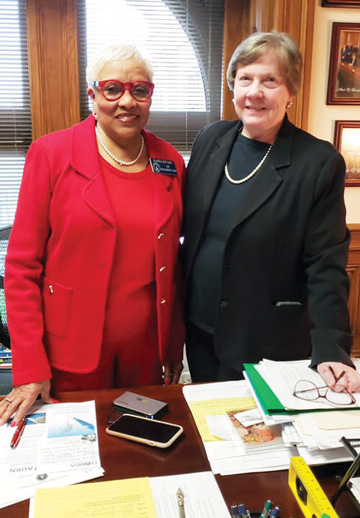Having a program champion with such a compelling personal story to teach about the danger posed by smoke in the OR no doubt helped our cause, but you don’t need such a dramatic incident to get your own smoke-free protocol up and running.
Here are the key elements of a successful, facility-wide rollout.
• Rely on frontline staff. While many facilities don’t have such a direct and visceral reminder of the dangers of surgical smoke as a frontline nurse who suffered an asthma attack in the middle of surgery, they do have a team
of dedicated, passionate perioperative nurses who are in harm’s way every time they step into an OR. These are the individuals you want as stakeholders to lead your efforts to go smoke-free. Our perioperative nurses were the ones who
gathered all the research we ultimately used to sell the program to leadership and ensured we met the criteria needed to achieve our gold level Go Clear status.
Obviously, equipment plays a significant role in any smoke-free initiative. This decision will vary greatly from facility to facility. For us, after the literature review, the next most crucial step in our process was reviewing all the equipment
we already had. Again, with this being a nurse-driven initiative, our frontline staff assessed our current smoke eliminating equipment and what was required to comply with AORN’s Go Clear criteria.
Before we started our journey to smoke-free ORs, we had six smoke evacuators. Today, for 17 ORs, we have 19 devices. During extensive plastic surgeries, we use two electrosurgery units, so we place two smoke evacuators in the OR. We were also
able to add cautery pencils that include integrated evacuators.
When reviewing smoke evacuators on the market, assess the ease of use, noise levels during activation, smoke removal efficiency and the cost of the equipment and the filters. Some companies might offer the evacuators for free if you purchases
the disposable filters from them.
• Use a variety of formats. After our nurses dug in and found the most compelling research on the dangers of surgical smoke, they presented the data to staff in a variety of formats to make sure everyone understood the information.
Remember, you want to present the data in a way that makes it virtually impossible for leaders and decisionmakers to deny the benefits of a smoke-free OR. Our nurse experts presented examples ranging from serious health issues accelerated
by smoke plumes to the potential financial impact due to additional coverage needed for sick days or lost surgical volume due to staff shortages.
The nurses spearheading the smoke-free movement crafted a presentation and shared it during an in-service for the rest of the staff during a weekly departmental meeting. That presentation combined a lot of relevant, educational information and
data — perioperative nurses report two times the number of respiratory issues such as chronic asthma, emphysema and bronchitis compared to the general population — with some compelling visual materials. For instance, during the
literature search, our smoke-free team discovered a video of a physician, Anthony Hedley, MD, who issued a statement on how he had contracted a pulmonary disease due to the hazardous effects of surgical smoke.
Information on the dangers of surgical smoke was also presented to our anesthesia team and surgeons during their meetings and disseminated to the various service lines via email. Having the surgeons view the succinct educational information about
the dangers of surgical smoke and our plan to eliminate it from the OR helped to get them engaged and committed to the initiative. We were easily able to secure 150-plus surgeon signatures signifying their complete support.
• Overcome resistance. Our facility was extremely fortunate in many ways. We had a persuasive champion with a compelling story to tell; we had a dedicated, passionate and highly organized group of nurses spearheading the initiative;
and we had the complete support of senior leadership. Still, there were plenty of challenges along the way. While most of our surgeons were on board with the initiative after we presented the research on the dangers of surgical smoke, there
was some initial resistance from a select few who refused to use smoke evacuators during their procedures. If this happens, be firm and stand your ground. When I was met with resistance, I respectfully informed the physicians that this
was a nurse-driven initiative that protects everyone in the OR and non-compliance wasn’t an option.
To be fair, most of the staff and surgeons we approached were on board with our efforts once they were presented with the
data. In fact, many were largely unaware of the hazards associated with surgical smoke. Like many of us, they believed the masks they wore provided adequate protection. This misconception was addressed during our in-service, subsequent meetings
and email communications. We listed the numerous toxic chemicals — formaldehyde, hydrogen cyanide, carbon monoxide — that are present in surgical plume and cited research showing that 77% of the particles go through or around the
mask, exposing staff to those toxic and dangerous chemicals. That was a real revelation for most members of the perioperative team.
.svg?sfvrsn=be606e78_3)


.svg?sfvrsn=56b2f850_5)